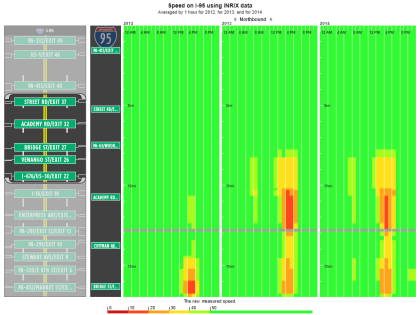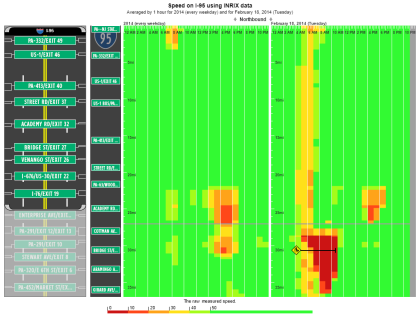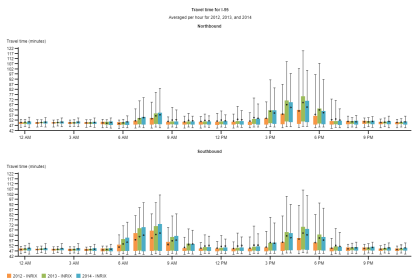Use Case:
Monitor and Manage Known Events
From a large construction project to an impending hurricane, monitoring and managing a known event can save time, money and even lives.
From a large construction project to an impending hurricane, monitoring and managing a known event can save time, money and even lives.
The following use case demonstrates how agencies used probe data analytics and decision support tools to ensure safe, efficient movement of traffic and minimize disruption to travelers.

PennDOT is working on a $2B, long-term, multi-phase initiative to rebuild and improve Interstate 95 in Philadelphia, Pennsylvania, widening the I-95 mainline for approximately nine miles and reconstructing five major interchanges.
The Delaware Valley Regional Planning Commission (a bi-state MPO) has agreed to provide planning assistance to PennDOT during the project.



This information helped the local PennDOT District 6 make a case to the Central Office and FHWA of the need for major transit investments, justifying a $41M flex to the area transit agency (SEPTA) for purchase of bi-level rail cars for the parallel Trenton Rail Line.
Using Congestion Scan and Performance Charts, DVRPC and PennDOT were able to: